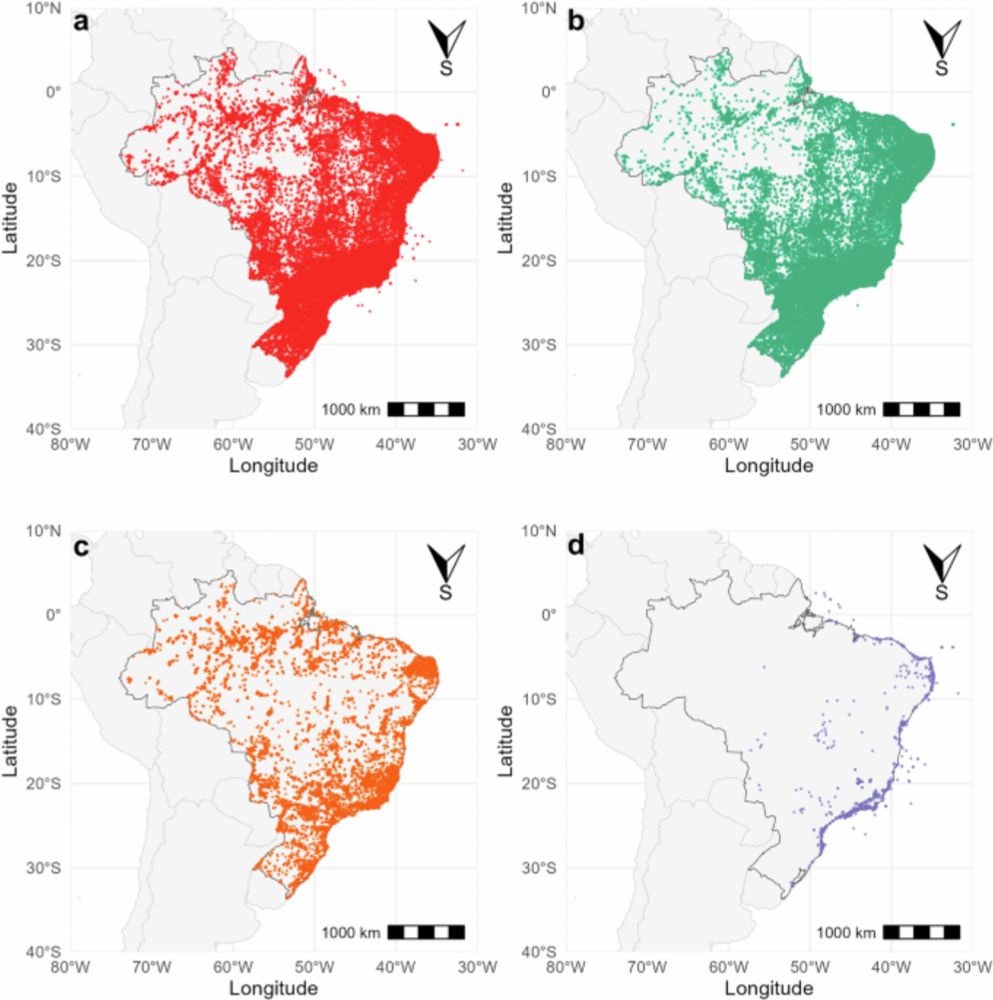
Interested in population genomics, invasive species, hybridization, adaptation, speciation

Our most recent work on this outbreak here: academic.oup.com/mbe/article/...


Chen et al. Genomic Insights Into Early‐Stage Selective Filtering During the Transport Stage of Biological Invasions pmc.ncbi.nlm.nih.gov/articles/PMC...

Chen et al. Genomic Insights Into Early‐Stage Selective Filtering During the Transport Stage of Biological Invasions pmc.ncbi.nlm.nih.gov/articles/PMC...
www.cam.ac.uk/jobs/faculty...
www.cam.ac.uk/jobs/faculty...

Zu et al.
nph.onlinelibrary.wiley.com/share/VB8MUG...

Zu et al.
nph.onlinelibrary.wiley.com/share/VB8MUG...

) are now open! MEME is a research- and mobility-oriented master’s in evolutionary biology (& I’m a proud alumna!), jointly run by the Unis of Groningen, Uppsala, Montpellier, and LMU Munich, with Harvard and Lausanne as partners. Spread the word!

) are now open! MEME is a research- and mobility-oriented master’s in evolutionary biology (& I’m a proud alumna!), jointly run by the Unis of Groningen, Uppsala, Montpellier, and LMU Munich, with Harvard and Lausanne as partners. Spread the word!


Defensive fungal symbiosis on insect hindlegs | Science www.science.org/doi/10.1126/...

Defensive fungal symbiosis on insect hindlegs | Science www.science.org/doi/10.1126/...
How does genetic architecture constrain evolutionary trajectories? To address this question, we inferred the genetic architecture of convergent plumage coloration and its evolutionary history in wheatears.

How does genetic architecture constrain evolutionary trajectories? To address this question, we inferred the genetic architecture of convergent plumage coloration and its evolutionary history in wheatears.
ie Allele A is introduced to taxon 1 from taxon 2, then allele A’ is introduced to taxon 1 from taxon 2
ie Allele A is introduced to taxon 1 from taxon 2, then allele A’ is introduced to taxon 1 from taxon 2
Dec 1 2025 deadline
Check out the Flyer below for more information on our #MOILAB!
Link to Flyer
docs.google.com/document/d/1...
@ucberkeleyofficial.bsky.social
@hhmi.org

Dec 1 2025 deadline
Check out the Flyer below for more information on our #MOILAB!
Link to Flyer
docs.google.com/document/d/1...
@ucberkeleyofficial.bsky.social
@hhmi.org
doi.org/10.1093/evle...
Now in @evolletters.bsky.social by Roberto García-Roa et al.

doi.org/10.1093/evle...
Now in @evolletters.bsky.social by Roberto García-Roa et al.
doi.org/10.1093/gbe/...
#Phylogenomics

doi.org/10.1093/gbe/...
#Phylogenomics




We have a 5-year postdoc position on #mountain non-native species & #macroecology in our group @unibas.ch. Great opportunity to join us!
Details here: jobs.unibas.ch/offene-stellen/postdoc-position-in-mountain-macroecology/6c5a8906-354f-43c6-bc9b-1156d21725a5
Please share!

We have a 5-year postdoc position on #mountain non-native species & #macroecology in our group @unibas.ch. Great opportunity to join us!
Details here: jobs.unibas.ch/offene-stellen/postdoc-position-in-mountain-macroecology/6c5a8906-354f-43c6-bc9b-1156d21725a5
Please share!

www.nature.com/articles/s41...

www.nature.com/articles/s41...
1/
www.biorxiv.org/content/10.1...

1/
www.biorxiv.org/content/10.1...



